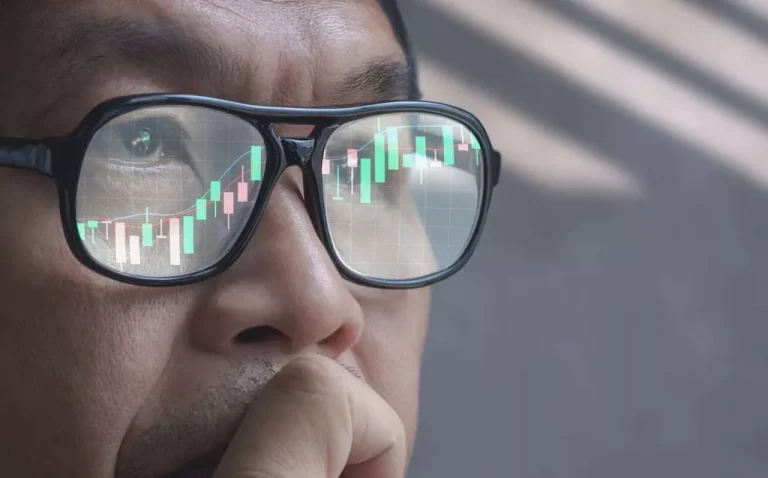Content
Once you’ve entered the wallet address, the tracking tool will display relevant information such as transaction history, current balances, what is btc address and token holdings. Review the data to gain insights into your incoming and outgoing transactions, historical performance, and overall investment portfolio. Yes, you can use the same address for multiple transactions, but generating a new address for each transaction can help keep your transaction history private since blockchain transactions are public. Segwit or Bech32 addresses, starting with ‘bc1’, were designed to reduce transaction sizes and fees, improving overall network efficiency. This increased efficiency allows more transactions to be processed per block, enhancing the overall performance of the Bitcoin network. As the crypto space evolves, the integration of Web3 technologies introduces new possibilities for decentralized applications (dApps) and smart contracts.
What is a Crypto Wallet Address: Closing Thoughts

Considering the immutable nature of cryptocurrencies, the ability of a wallet to create a unique address every time a Proof of personhood user needs is a protection measure. A crypto address is a unique string of characters that represents a wallet that can send and receive cryptocurrency. Every address is unique and denotes the location of a wallet on the blockchain. You cannot change an existing crypto wallet address, but you can generate a new one and send your assets there.
Primary Functions of a Wallet Address
In elliptic curve cryptography, the number of possible key combinations is finite but extremely large, which has so far been enough to ensure security. However, quantum computers could significantly reduce the time needed to break these combinations. This ability, known as quantum parallelism, allows quantum computers to solve problems much faster. In particular, Shor’s algorithm can efficiently solve the elliptic curve discrete logarithm problem, which underpins ECDSA. This innovation makes it feasible for quantum computers to reverse-engineer private keys from public https://www.xcritical.com/ keys much faster than classical computers.
Can I share my wallet address publicly?
While Willow is not yet capable of breaking encryption, its development demonstrates the rapid progress toward more powerful quantum systems. Quantum computing represents a significant leap in computational capability. Quantum-resistant tokens use advanced cryptographic methods to protect against the powerful capabilities of quantum computers. This is what makes blockchain transactions secure and nearly impossible to alter. It’s essentially a decentralized network, also called a distributed-ledger technology (DLT). This means there is no single authority serving as a gatekeeper or facilitator for the transactions taking place within the network.
- If you’re thinking about jumping on the crypto train, understanding your wallet address is the first step to unlocking the power of decentralized finance.
- As a seasoned crypto writer, he brings a wealth of knowledge and expertise to his work, making complex concepts accessible to a broad audience.
- Introduced to support advanced functionalities like multi-signature transactions, P2SH addresses start with ‘3’.
- You’d also be able to send yourself Bitcoin if, for example, you had it stored on a crypto exchange and wanted to move it to your own wallet.
- The public key is a cryptographic code generated from the private key through an algorithm.
How does a wallet address for crypto work?
As cryptocurrencies steadily head towards a wider adoption, it’s crucial to be aware of the risks and safety concerns related to crypto addresses. Understanding these challenges and taking necessary precautions can help safeguard your digital assets. Additionally, exploring the future trends in crypto address technology unveils exciting innovations that enhance security and usability. A crypto address consists of alphanumeric characters and is typically represented as a long string of numbers and letters.
Most crypto wallets allow you to generate multiple addresses so managing additional wallet addresses is easy. Since blockchain transactions are permanent and immutable, your best bet is to contact the owner of the crypto wallet address you sent the funds. You can often use a wallet address’s transaction history on a block explorer to find the user’s social media accounts. Sometimes the crypto community is kinder than you think, and in some cases mistakenly sent funds are sent back in good faith.
This legislative focus aligns with the growing institutional involvement in crypto through ETF investments, tokenized treasuries, and stablecoin initiatives. The regulatory clarity is anticipated to come primarily from Congress rather than the SEC. A Polytechnic University of Catalonia thesis in 2021 used a broader description, including not only alternative versions of bitcoin but every cryptocurrency other than bitcoin. Getting a crypto wallet address is a straightforward process, but it can vary depending on what type of wallet you’ve chosen to go for. Below are three step-by-step guides on how to get your crypto wallet address for the main types of digital wallets available on the market. While ECDSA uses elliptic curves, essentially two-dimensional mathematical objects, lattice-based cryptography adds many more dimensions.
Keep your operating system and antivirus software updated to protect against potential vulnerabilities. Your first monthly fee will be billed to your parent wallet seven days after successful registration. To receive a refund of your first monthly fee, you must request to close your account on or before the day immediately preceding your first Monthly Billing Date. See the ‘Account’ tab of Settings by tapping the gear icon on the Greenlight app home page to confirm when your risk-free trial ends.
For example, an Ethereum address won’t work on the Bitcoin or Solana network. Each blockchain uses its own protocol and cryptographic methods for generating addresses. Some multi-chain wallets allow you to manage multiple addresses from different networks within one app, but the addresses themselves remain distinct for each network.
In the case of Bitcoin, the address length can vary between 25 to 36 alphanumerical characters, while in the case of Ethereum (ETH), the average is about 42 characters for each address. A timestamp is a digital record used in blockchain networks to track when information and data was exchanged, created, or removed. Yes, it is safe to share your wallet address publicly, as it only allows others to send cryptocurrency to your wallet. To use your new crypto wallet address, you will need to fill it with some cryptocurrency. If you’re using a Ledger crypto wallet, you can access a range of different Buy providers directly through Ledger Live—without losing custody of your assets.

It is important to note that each time you generate a new address, it is completely independent of any previously generated addresses. This means that you can have multiple addresses within the same wallet and use them for different purposes, enhancing privacy and security. To understand the structure and components of a crypto address, let’s examine the anatomy of a typical crypto address. Although the specific details may vary depending on the cryptocurrency, the fundamental elements are generally similar. BlockchainReporter is a trusted name in the cryptocurrency and blockchain technology news space, keeping its readers abreast of the latest and most significant trends in the industry. The different types of wallet addresses include P2PKH, P2SH, Bech32, and Taproot Addresses.
This process is seamless and secure; it ensures that only Bob, who has the private key, can access and use these Bitcoins. If you’ve decided to invest in cryptocurrency, risk management is also important. Since the crypto market is highly volatile, stick to long-term investments and only spend money you can afford to lose. Also take some time to review how to store cryptocurrency so that you can keep your funds safe. Most blockchain wallets can manage various types of cryptocurrency, and they generate different addresses depending on the cryptocurrency being received.
Imagine a puzzle where you have to solve multiple complicated equations at once. These aren’t just any equations; they’re nonlinear and multivariate (many variables). Even quantum computers struggle with these riddles, which is why they’re great for encryption. This form of ledger technology is what’s behind cryptocurrencies and other tech trends.
Thanks to Ledger’s offline storage in a Secure Element chip, it’s custom OS BOLOS, secure screen, and expert testing, it’s resistant to remote and physical hacking. Users’ private keys are kept in a tamper-proof secure element chip and never exposed. Plus, transactions must be physically confirmed on the device, ensuring only the owner can access funds. A cryptocurrency address (or public key) is a unique sequence of numbers and letters identifying wallets. Users use it to receive and send crypto funds.Each crypto address has a private key.

In summary, crypto addresses are unique alphanumeric strings derived from public keys that serve as digital identifiers within the blockchain network. They are used to receive and send cryptocurrency transactions and have different formats based on the specific cryptocurrency being used. Understanding the basics of crypto addresses will help users navigate the world of cryptocurrencies with confidence and security. Crypto addresses play a crucial role in facilitating seamless and secure transactions within the cryptocurrency ecosystem.